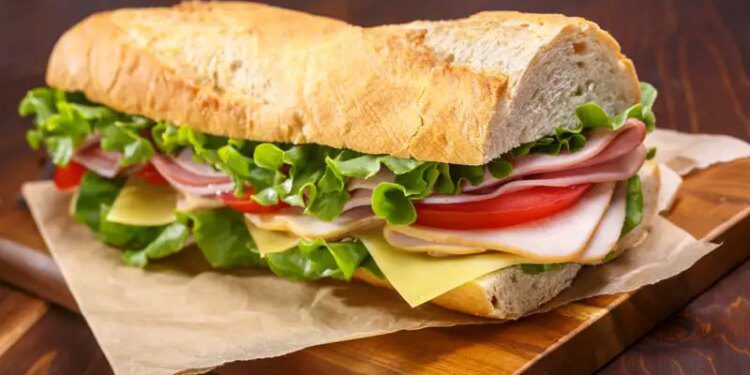24
New Jersey, the land of jughandles, diners, and the Jersey Devil, is facing a dilemma more divisive than the “Taylor ham” vs. “pork roll” debate (don’t even get us started). This time, it’s all about what you call that delicious, meat-packed, carb-loaded sandwich that’s as iconic to the Garden State as Bruce Springsteen himself. So, the burning question is: Is it a hero, hoagie, or sub?
Let’s break it down.
The Sub Squad: The Classic Contender
If you grew up calling it a “sub,” you’re probably the type who grew up on the Shore, fist-pumped to Bon Jovi, and know that Wawa is life. The term “sub,” short for “submarine sandwich,” supposedly comes from the shape of the roll resembling a submarine. Simple, right? Subs are the OG term in most parts of New Jersey, and they come packed with layers of cold cuts, lettuce, tomato, and just the right amount of mayo. Oh, and let’s not forget the drizzle of oil and vinegar that somehow ends up all over your hands (and somehow makes the whole thing taste better).
In Jersey, places like White House Subs in Atlantic City have been serving up these bad boys since the 1940s. If you haven’t had a sub there, did you even really go to Jersey?
You’re a “sub” kind of person if you don’t mind waiting 30 minutes in line at a deli on the weekend and have strong opinions about the perfect bread-to-meat ratio.
2. The Hero Hangout: The Bold Alternative
Calling it a “hero” puts you in league with North Jerseyites who know that NYC is just a PATH train away. Heroes aren’t just sandwiches; they’re super sandwiches. The term allegedly originated from the Big Apple itself, where a local food writer in the 1930s described the sandwich as so large that “you had to be a hero to eat it.” In North Jersey, where the skyline’s visible, this term caught on, and suddenly, every deli and corner bodega was slinging “heroes” like they were the latest Marvel movie.
If you’re ordering a hero, you’re the kind of person who pronounces “cawfee,” thinks the best bagels come from bagel shops (because obviously), and can navigate city traffic like a boss.
The Hoagie Horde: The Unexpected Challenger
Now, if you’re calling it a “hoagie,” you’ve probably got roots down in South Jersey, or as some like to call it, “Philly’s little brother.” The hoagie is synonymous with Philly culture, but its reach extends well into Jersey. Legend has it that during World War I, Italian immigrants working at the Hog Island shipyard in Philadelphia brought these sandwiches for lunch. They were initially called “Hog Island” sandwiches, which eventually got shortened to “hoagies.”
In South Jersey, ordering a hoagie is second nature. You’re probably grabbing one on your way to an Eagles game or right before heading to Wildwood for the weekend.
You’re loyal, laid-back, and have a special place in your heart for cheesesteaks, soft pretzels, and Wawa’s hoagiefest (because duh).
Here’s the thing, New Jersey: No matter what you call it—hero, hoagie, or sub—you’re biting into the same glorious creation. It’s the kind of sandwich that’s perfect for a beach day, a Sunday football game, or just because it’s Wednesday, and you deserve it. What truly matters is what’s inside: fresh bread, high-quality meats, cheese that’s just right, and whatever else your sandwich-loving heart desires.
Some people also call these sandwiches ‘grinders’, but we can all agree, those people are weird.
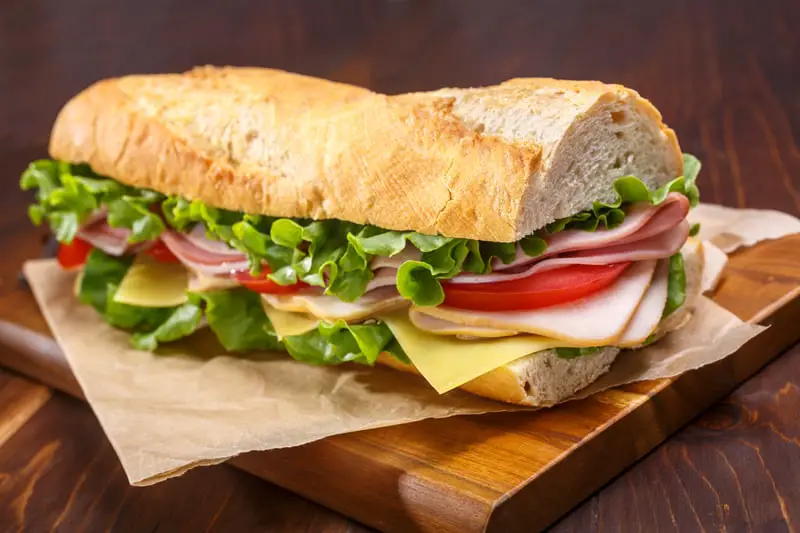
But if we’re being honest, we all know the debate won’t end here. In Jersey, food is a passion, and everyone has their loyalties. Just like no one can decide whether Central Jersey exists (spoiler: it does), no one’s settling on what to call this sandwich anytime soon.
So, next time you’re ordering one, just remember: whether you’re a “hero” hero, a “sub” specialist, or a “hoagie” hero, you’re part of a proud Jersey tradition. And honestly, as long as it’s delicious, does it really matter what it’s called?
Now, let’s talk about that Taylor ham vs. pork roll thing…
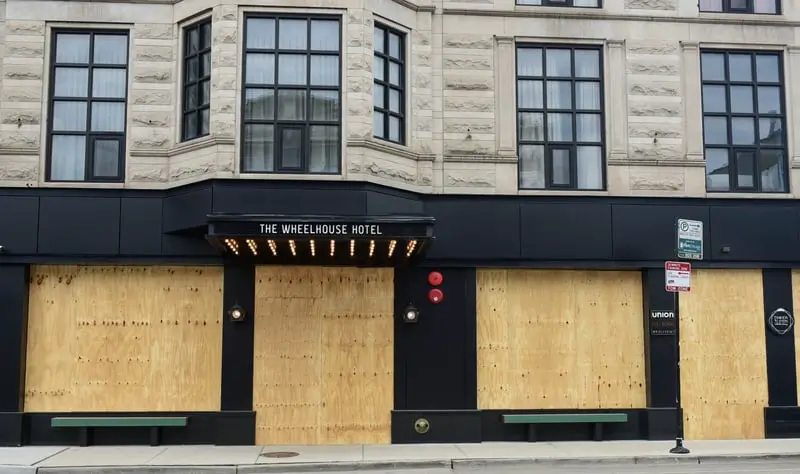 Chicago Businesses Are Boarding Up Ahead of Planned Violence, Turmoil Outside DNC Convention
Chicago Businesses Are Boarding Up Ahead of Planned Violence, Turmoil Outside DNC Convention
As the Democratic National Convention (DNC) rolls into Chicago, the city’s business district is already looking like a fortress. Storefronts that typically showcase high-end fashion, bustling cafes, and local boutiques are now hidden behind layers of plywood. It’s not the welcoming image you’d expect for such a high-profile event, but it’s a scene that has become all too familiar when large political gatherings loom.
This isn’t the first time Chicago businesses have had to board themselves up. The photos in this article show what happened in 2020 during the George Floyd riots. Next week could see more damage and destruction as the left-wing of American politics continues to battle itself.
Downtown Chicago’s ‘Plywood Chic’—A New Normal?
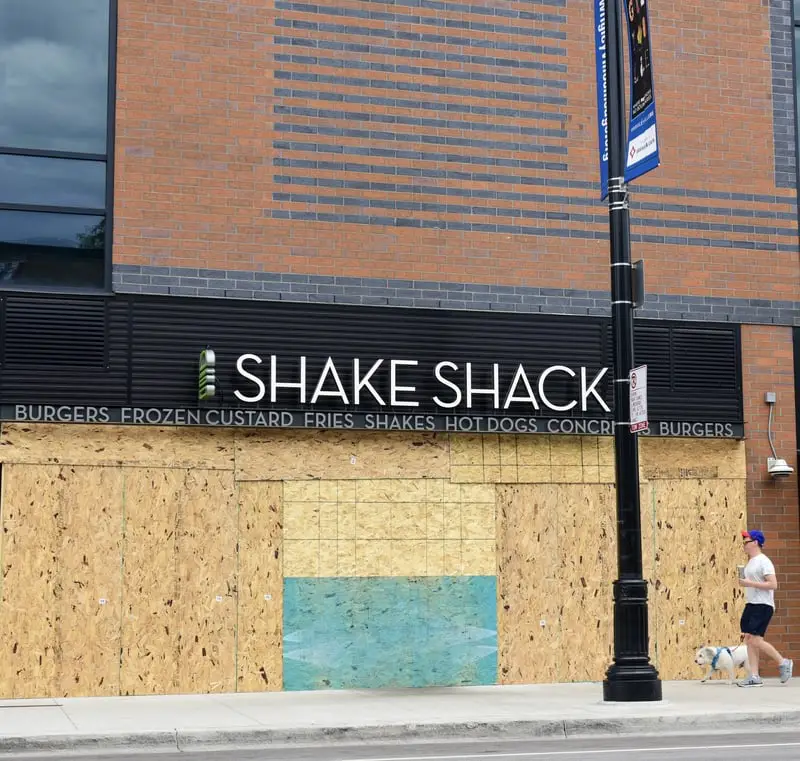
Let’s be real: It’s unsettling to see a vibrant city like Chicago preparing for the worst. The DNC hasn’t even started, and yet businesses are already battening down the hatches as if a storm is about to hit. The fear? That protests could spiral out of control, leading to looting, vandalism, or worse.
Compare that to the Republican National Convention (RNC) in Milwaukee earlier this year. Businesses there didn’t seem to feel the same need to turn their storefronts into makeshift bunkers. So, what gives?
Milwaukee’s RNC: The Calm Before… Nothing?
Milwaukee’s RNC came and went with minimal fuss. There were no widespread reports of unrest, no chaotic scenes, and certainly no mass boarding up of businesses. So, why the stark difference?
One could argue that the nature of the events themselves plays a role. Historically, protests around Democratic events have been more intense, often drawing larger crowds with diverse causes. And let’s not forget, Chicago has a history of political unrest that dates back decades, from the infamous 1968 Democratic Convention to more recent Black Lives Matter protests.
But it’s not just about history; it’s about perception. The Biden-Harris administration and mainstream media have often portrayed Trump supporters as a major threat to democracy, framing them as potential instigators of violence. Yet, when it comes to actual events like the RNC, the reality doesn’t always match the hype. Milwaukee didn’t see businesses scrambling to protect their properties because, frankly, the fear wasn’t there.
The Politics of Fear and Preparation
So, what does this say about the state of America under the Biden-Harris administration? Critics argue that this is a sign of the times—a reflection of a country that’s more divided than ever. They claim that the current administration has failed to unite the nation, instead fostering an environment where unrest is expected, even anticipated, when political events occur.
Supporters of the administration, on the other hand, might say that preparing for the worst is simply smart governance. After all, if businesses don’t board up and something does happen, the outcry would be even louder.
What’s Next for Chicago and the DNC?
As the DNC kicks off, all eyes will be on Chicago. Will the boarded-up storefronts prove to be a precautionary measure, or will they end up as a necessary defense against chaos? One thing’s for sure: The contrasts between the RNC in Milwaukee and the DNC in Chicago offer a stark look at the current political landscape in America.
Whether you see it as prudent preparation or a symptom of deeper issues, the plywood-covered windows of Chicago are a telling sign of the times—and they raise serious questions about where the country is headed.
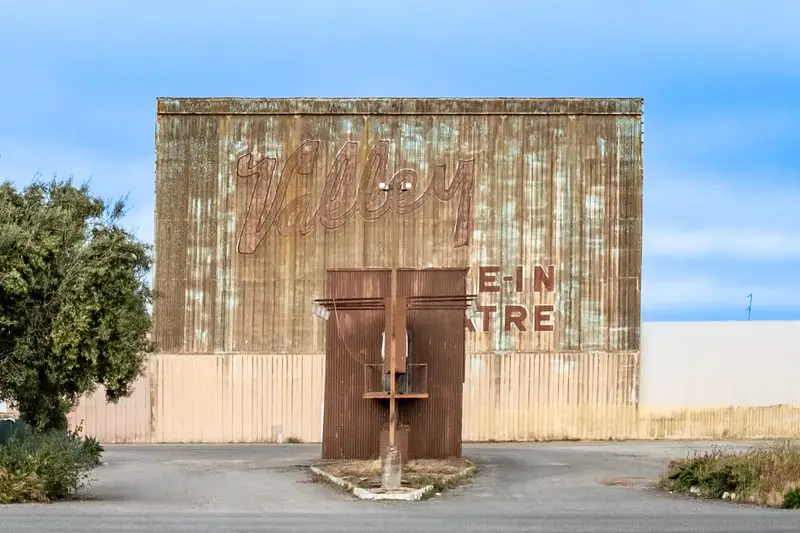 New Jersey’s Last Drive-In Theater Continues to Wow Moviegoers
New Jersey’s Last Drive-In Theater Continues to Wow Moviegoers
New Jersey holds a special place in the history of drive-in theaters, as the birthplace of this quintessential American experience.
The first-ever drive-in theater was opened in Camden, NJ, on June 6, 1933, by Richard Hollingshead Jr., who sought to combine his love for movies with the comfort of watching them from a car. What began as a simple setup with a Kodak projector on the hood of a car quickly became a nationwide phenomenon, with thousands of drive-ins popping up across the country by the 1950s.
Drive-in theaters reached their peak in the 1950s and 60s, offering an affordable and accessible form of entertainment. Families could load up the car with kids, snacks, and blankets, and enjoy a night under the stars.
At their height, there were more than 4,000 drive-in theaters in the United States, with New Jersey hosting about 50 of them.
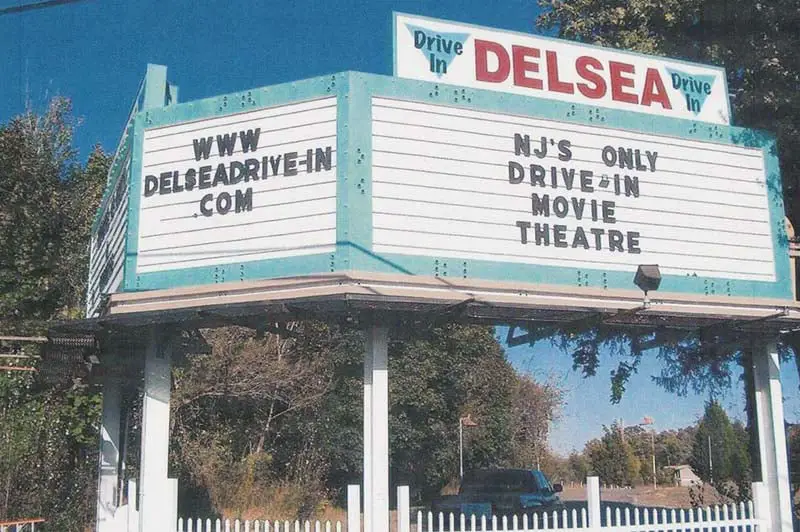
However, by the late 20th century, the number of drive-ins began to dwindle due to various factors such as the rise of indoor multiplex cinemas, increasing real estate values, and changing entertainment habits. Today, the Delsea Drive-In Theatre in Vineland, NJ, stands as the last remaining drive-in theater in the state, keeping the nostalgic experience alive.
Opened in 1949, the Delsea Drive-In enjoyed nearly four decades of success before closing in 1987, a victim of the same trends that shuttered so many other drive-ins. But in 2004, the theater was revived by Doc and Jude DeLeonardis, who modernized the experience while maintaining the classic charm. They added in-car audio, healthier food options, and solar panels to power the theater, all while continuing to screen double features on weekends.
Today, the Delsea Drive-In is more than just a theater; it’s a cherished piece of New Jersey’s cultural history. Families, couples, and drive-in enthusiasts from all over flock to Vineland to enjoy a night of movies under the stars. With a blend of traditional snacks and modern amenities, it offers a unique way to relive the golden age of drive-ins or introduce a new generation to this beloved pastime.

Whether you’re looking for a dose of nostalgia or a special night out, the Delsea Drive-In remains a beacon of the drive-in era, inviting everyone to experience the magic of movies in the great outdoors.
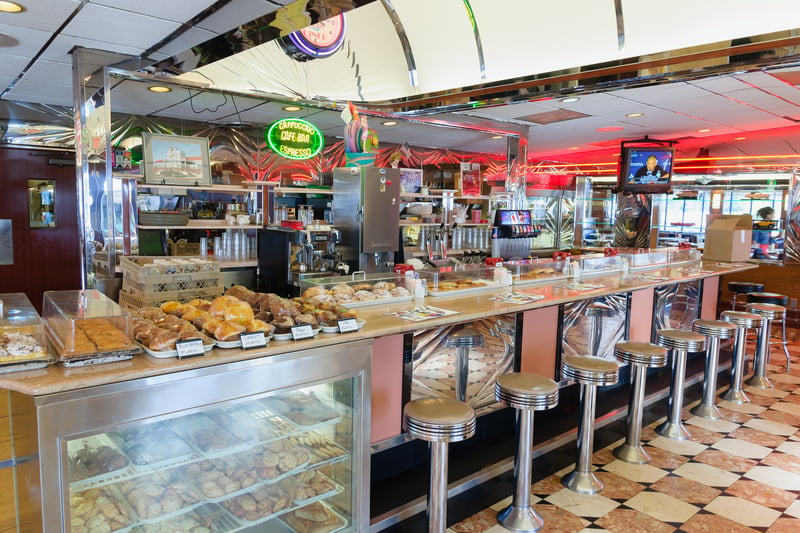 New Jersey Diner Culture is Alive and Well in Toms River
New Jersey Diner Culture is Alive and Well in Toms River
TOMS RIVER, NJ – If you’re in Toms River, NJ, and craving that classic diner experience, you’re in for a treat.
This town is home to some top-notch diners where comfort food reigns supreme, and each has its own special flair.
Toms River Diner is the quintessential Jersey diner. Located right on Route 37, this spot delivers everything you’d expect from a solid diner experience—great food, cozy vibes, and a staff that treats you like family. Their Eggs Benedict is a local favorite, and you can’t go wrong with a classic grilled cheese or their hearty home fries. It’s the kind of place where you can grab a late-night bite or a leisurely breakfast and always leave satisfied.
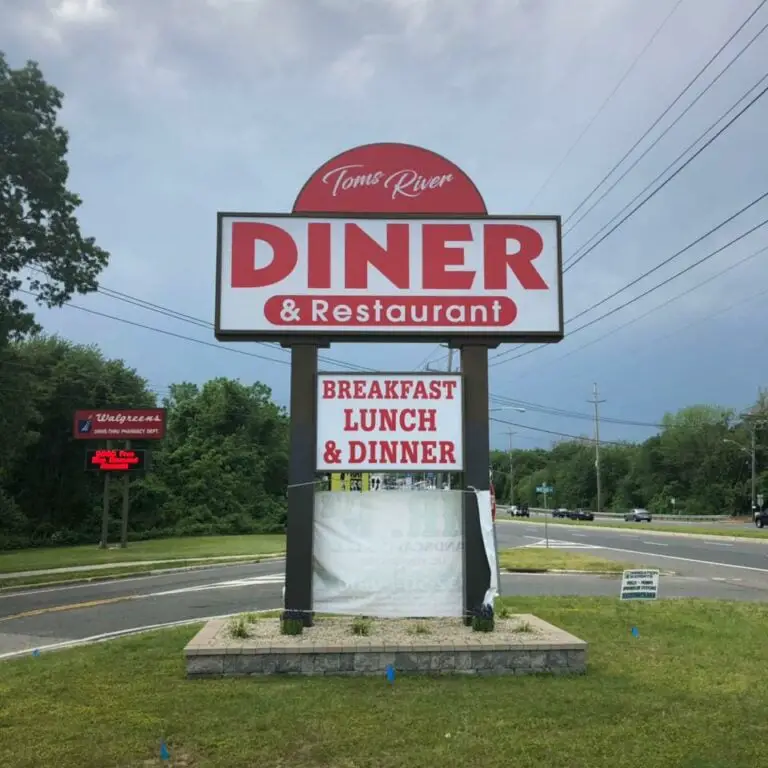
Crystal Diner is another Route 37 gem, shining with its retro chrome exterior and patriotic décor. The menu here is extensive, offering everything from burgers and seafood to Mexican specialties like their generously portioned chicken quesadilla. The diner is known for its welcoming atmosphere and homemade desserts that are perfect for anyone with a sweet tooth. Just be sure to come hungry—the portions are no joke!

Silverton Diner might be a bit off the beaten path on Hooper Avenue, but it’s a local treasure for those in the know. With its no-frills, classic diner vibe, Silverton serves up all the diner staples, including fluffy pancakes and fresh sandwiches. The service is quick and friendly, making it a great spot for a casual meal that hits the spot every time.
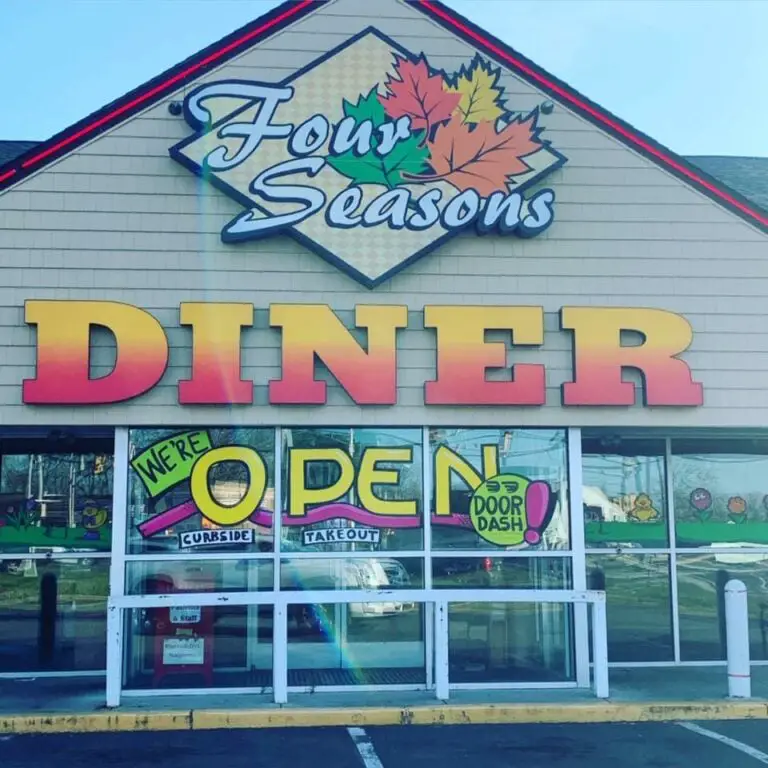
Lastly, Four Seasons Diner on Fischer Boulevard is a bit of a wildcard. While it carries the diner name, it brings a unique twist to the traditional diner fare. They’re known for their upscale Italian dishes, like Chicken Marsala, and even have a full-sized brick oven churning out some of the best pizzas in town. Whether you’re in the mood for a breakfast skillet or a prime rib dinner, Four Seasons has got you covered.
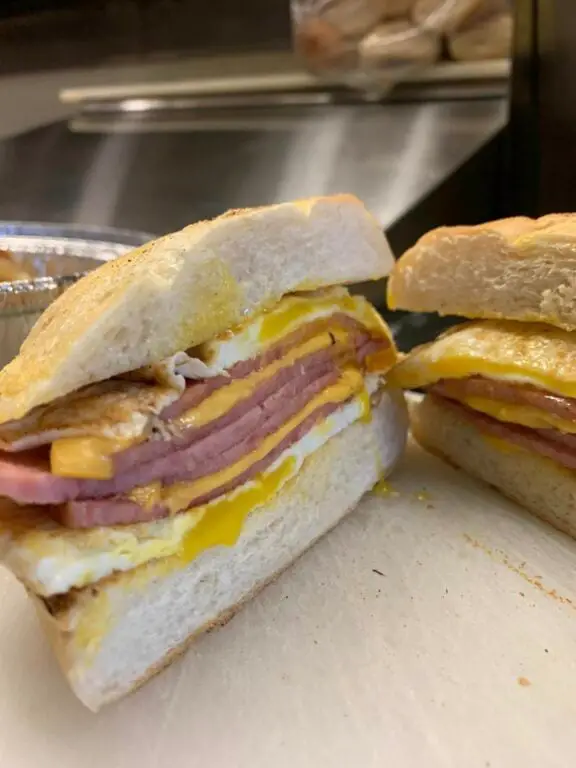
Each of these diners has its own unique charm, making Toms River a great destination for diner aficionados
Source link : http://www.bing.com/news/apiclick.aspx?ref=FexRss&aid=&tid=66c0e58857d6417fbe9e510ddcf086d6&url=https%3A%2F%2Fwww.shorenewsnetwork.com%2F2024%2F08%2F17%2Fnew-jersey-caught-between-the-slices-of-a-sandwich-controversy%2F&c=5221568828247161691&mkt=en-us
Author :
Publish date : 2024-08-17 01:26:00
Copyright for syndicated content belongs to the linked Source.

